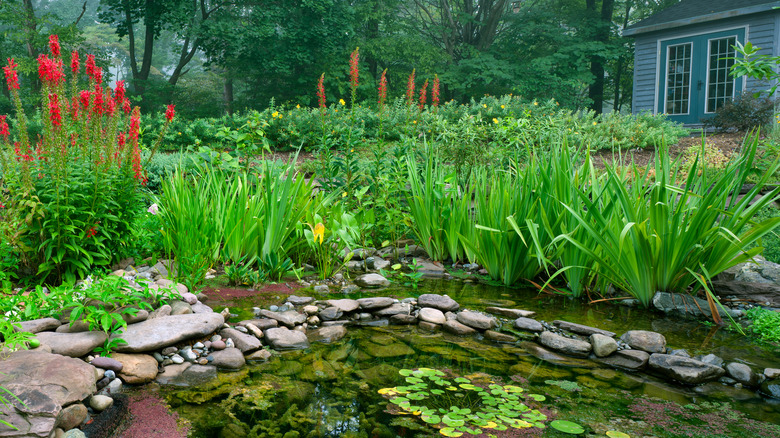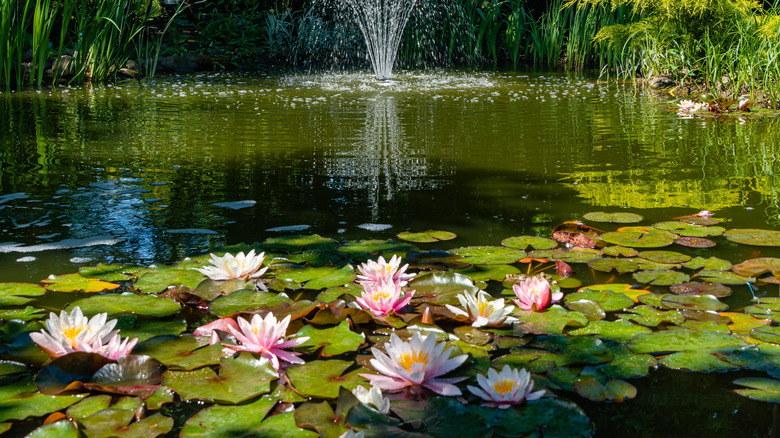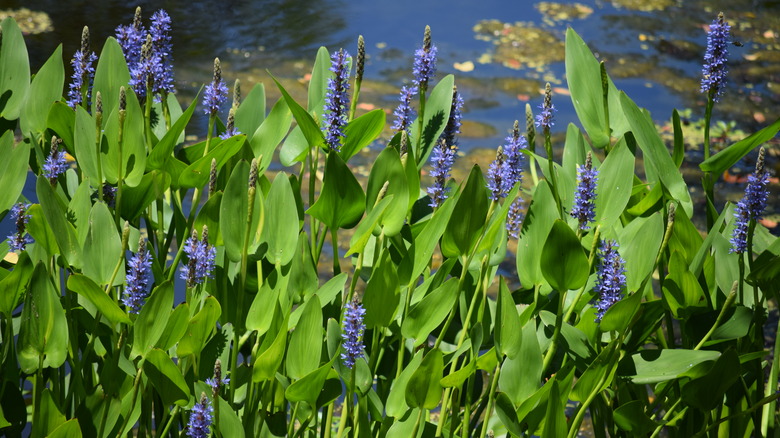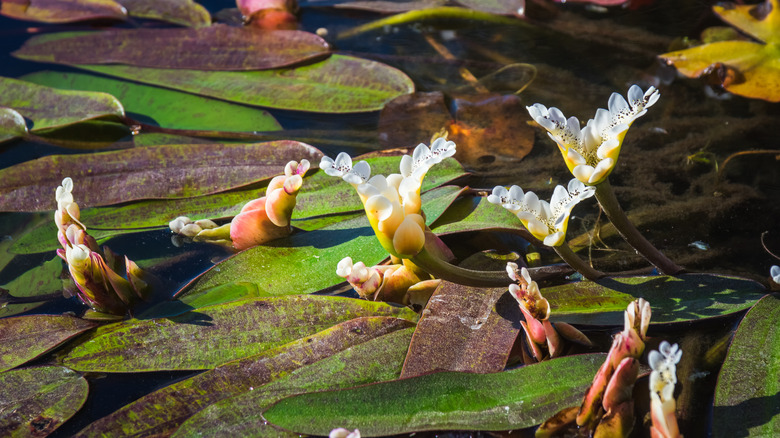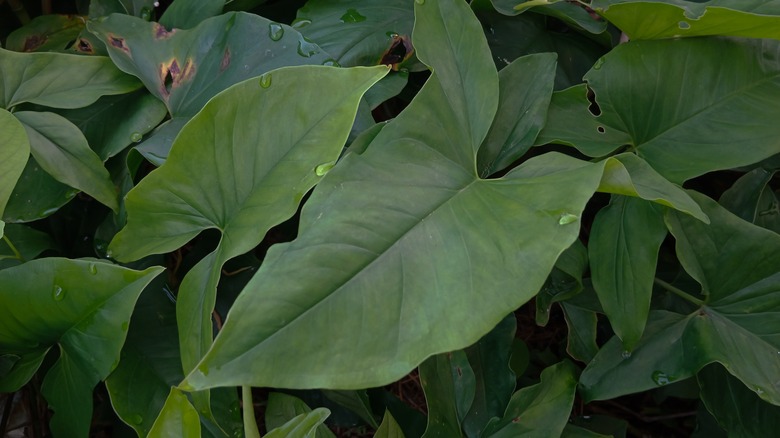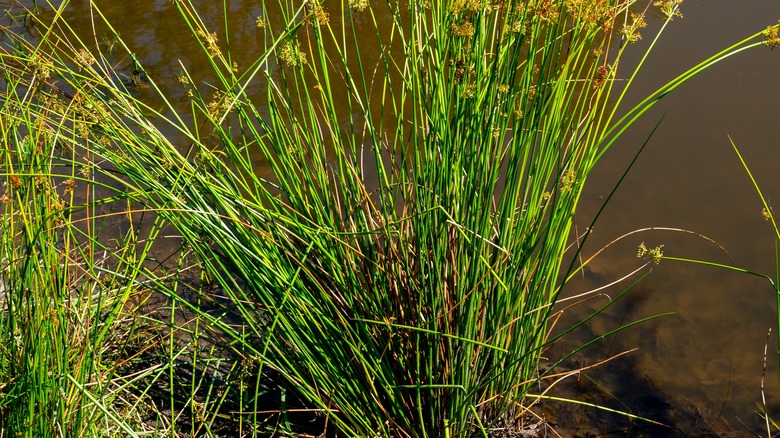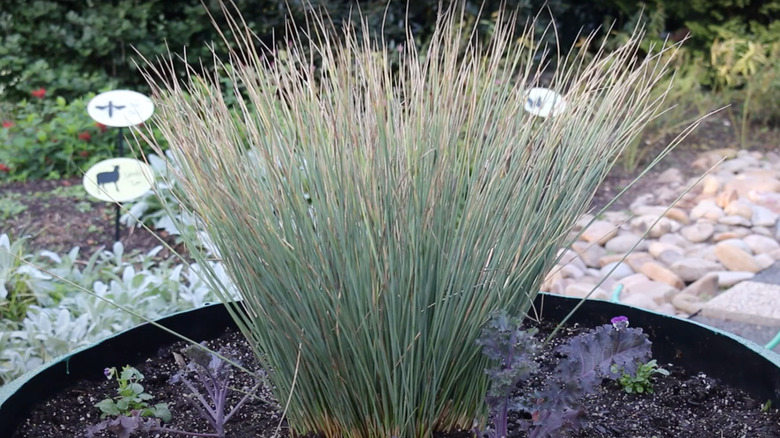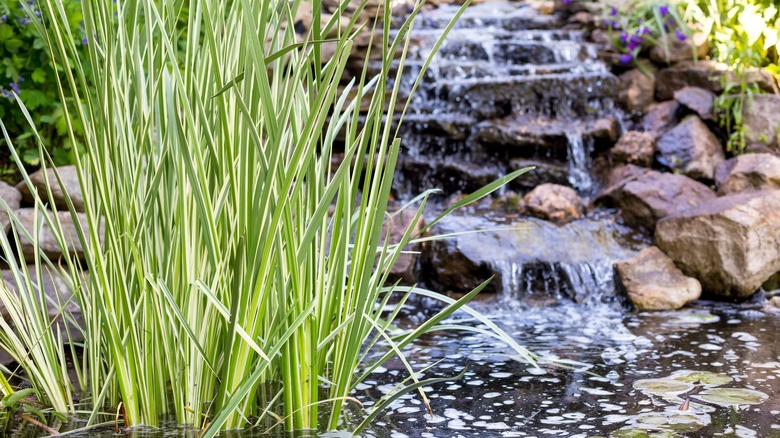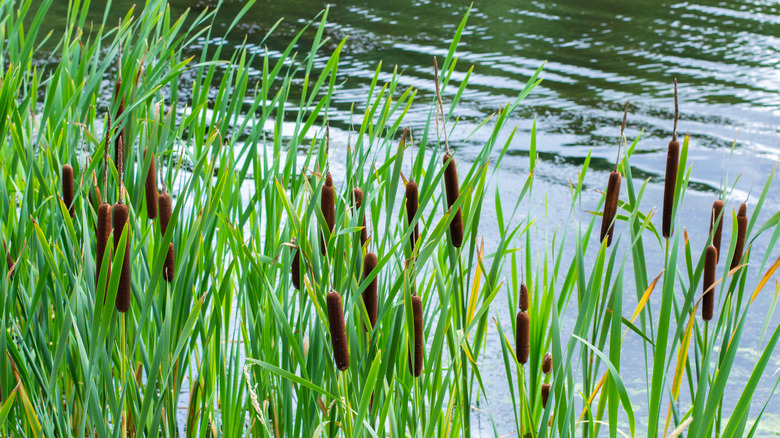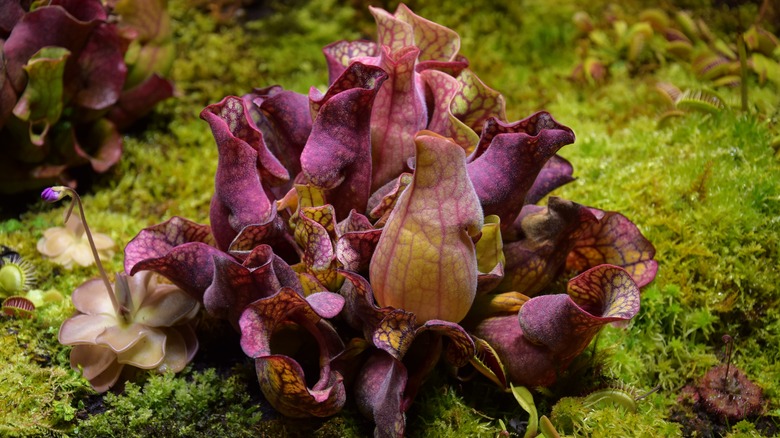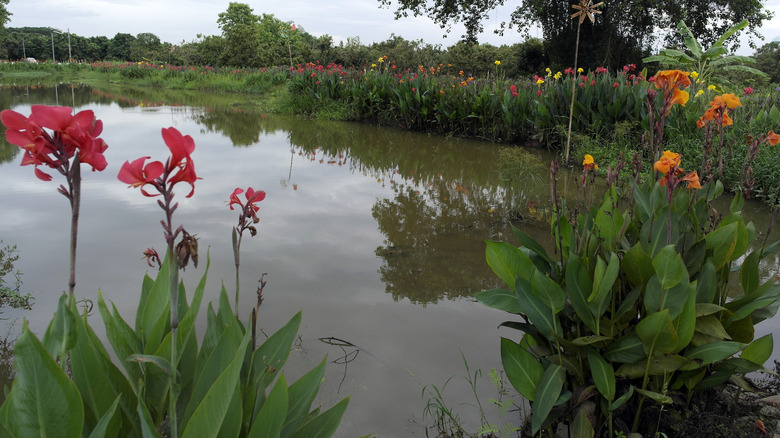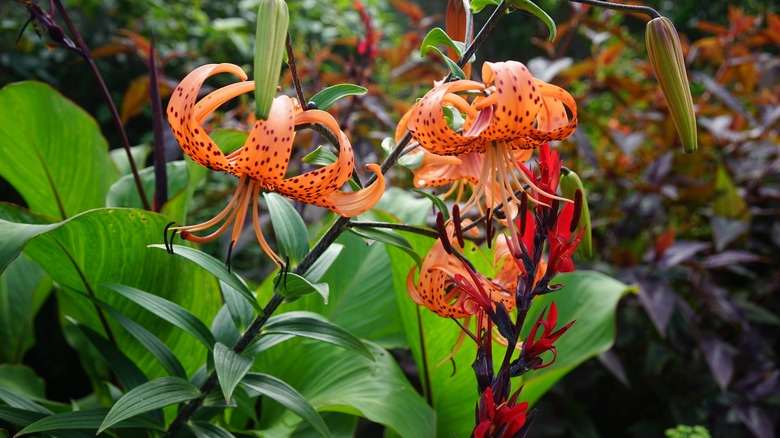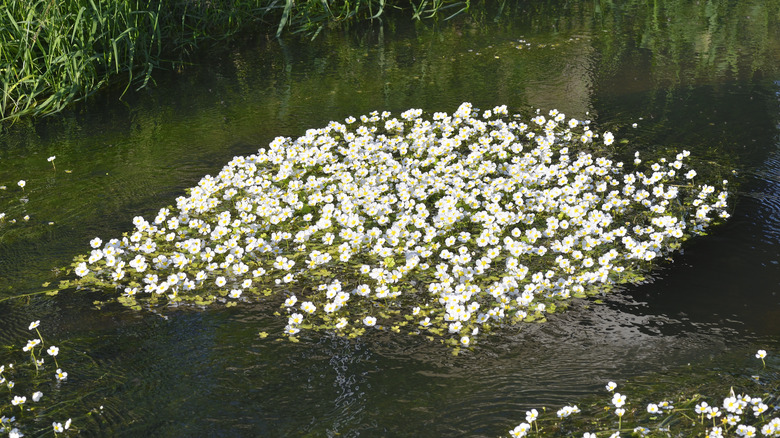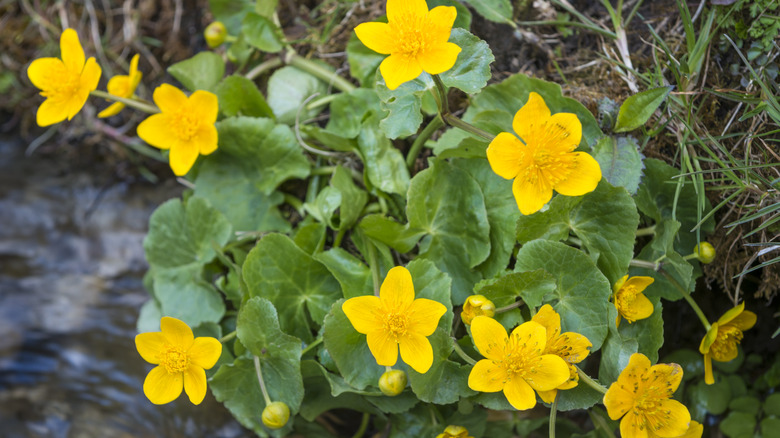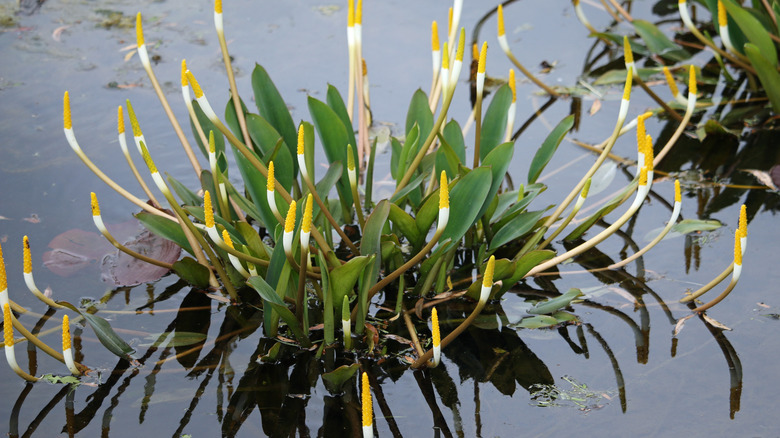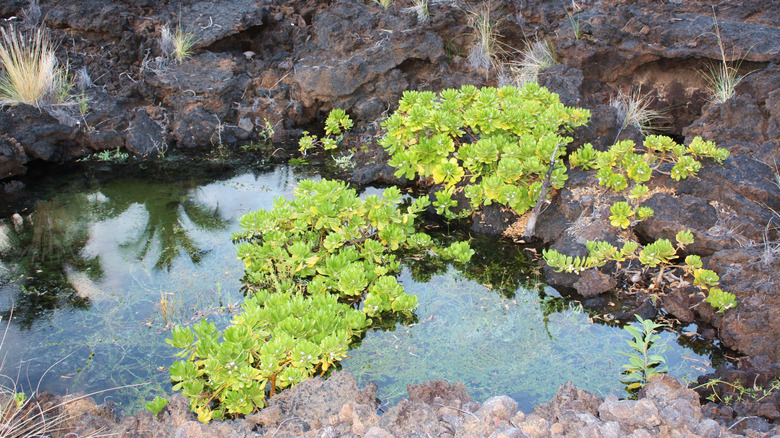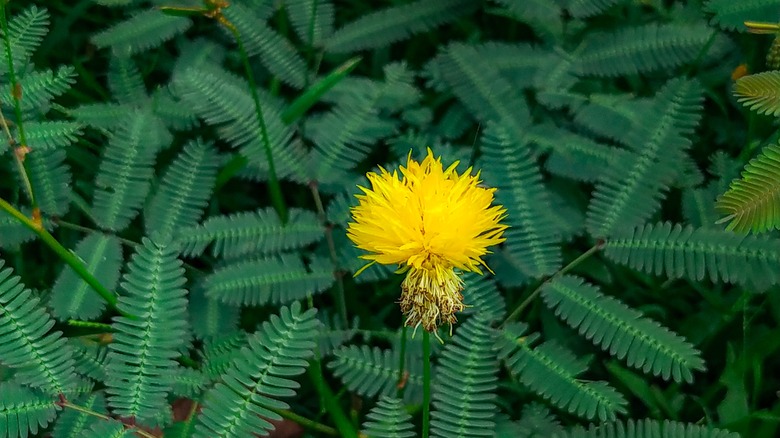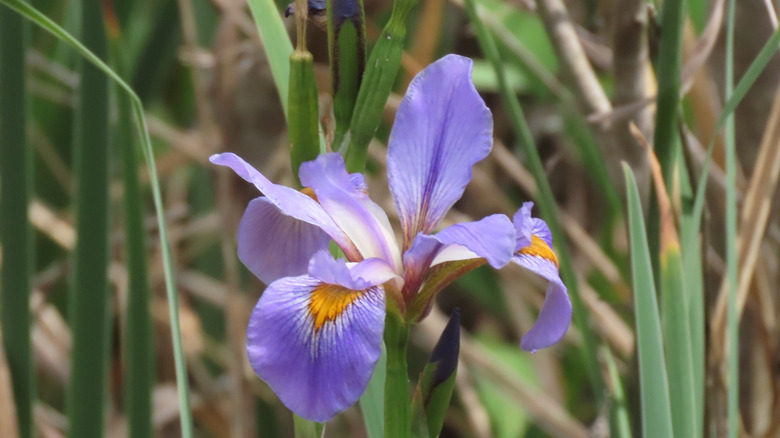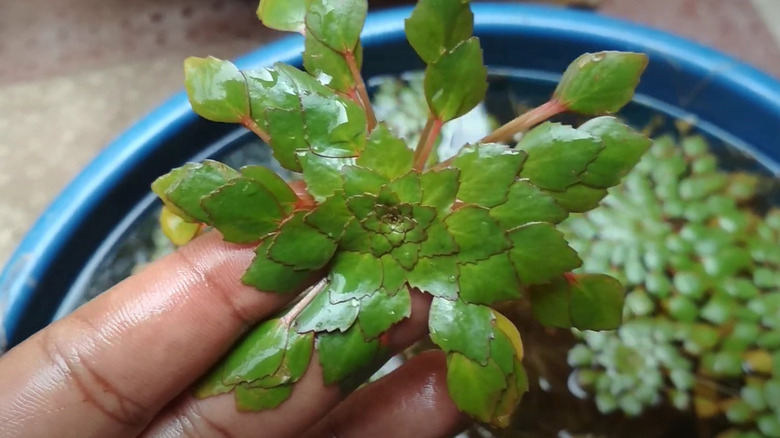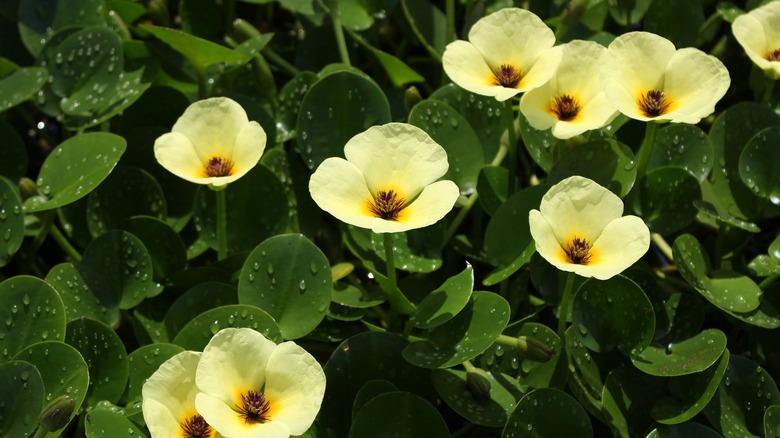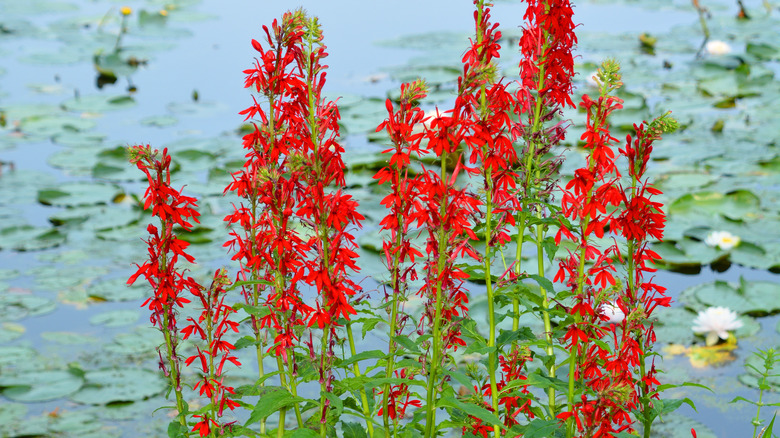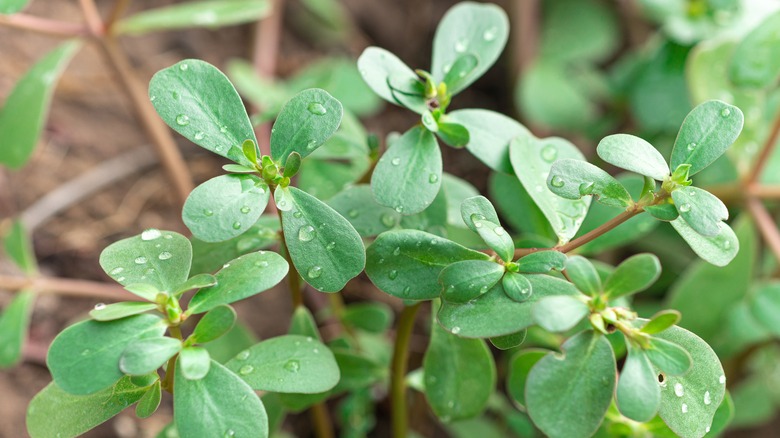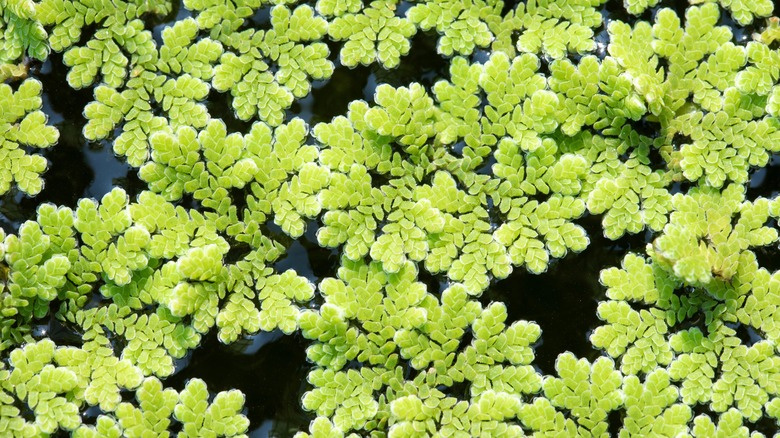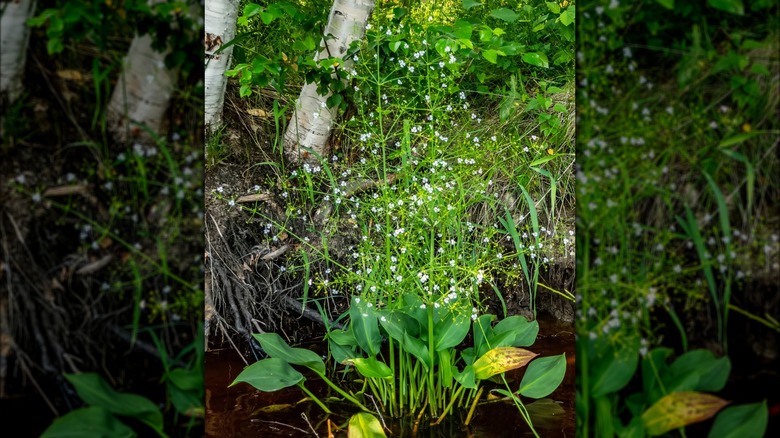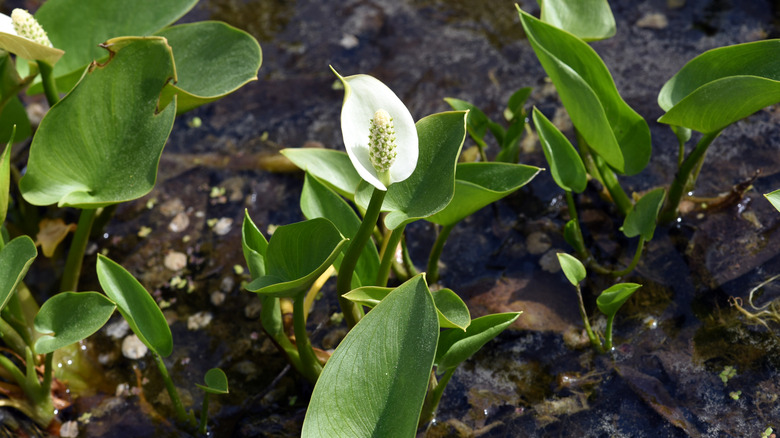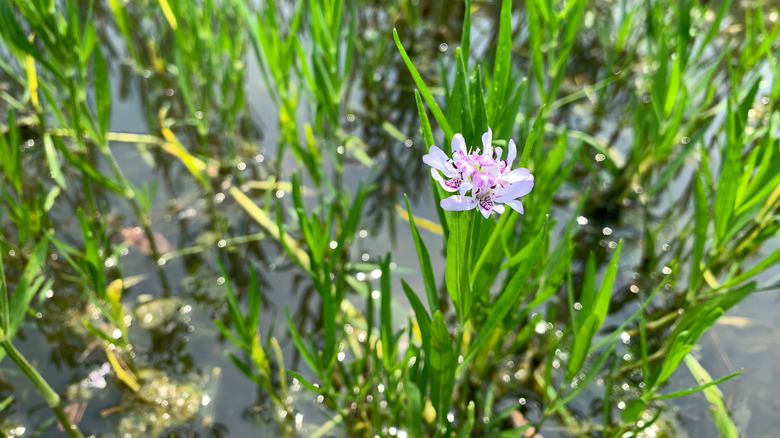25 Aquatic Plants You Should Add To Your Natural Water Features
So, you've got a natural water feature? It could be a swimming pond, a brook, or even a waterfall. To transform that spot from nice to magical, aquatic plants could be your allies. However, this isn't merely about elevating the aesthetics of your water feature. It's about smart picks that vibe well with your garden and what the environment is throwing at you. Different aquatic plants mean different perks: think purifying the water, battling the algae, or supporting local wildlife. Some stabilize the soil and water's oxygen levels, keeping things balanced and vibrant. With 26 aquatic plants to choose from below, you're all set to make your natural garden water feature the crowning glory of your outdoor space.
Aquatic plants for natural water features come in many varieties. Picture the laid-back charm of floating plants first. Icons like water lilies aren't just a feast for the eyes; they also throw shade (the good kind) to keep the underwater community cool and happy. Then there's the sophisticated crowd: marginal plants. From cattails to the sunny faces of yellow irises, these guys add layers and character to the edges of your natural pond. And let's not forget about the emergent plants like the American water plantain that stand tall, dipping their roots below while reaching for the skies. Lastly, meet the submerged plants. Stealthy workers like water hawthorne and water buttercups are the behind-the-scenes stars, oxygenating water and keeping the clarity and health of your natural water feature on point.
1. Water lily
Water lily (Nymphaea spp.) first catches the eye with its broad, oval, green leaves tinged with a hint of red or purple. As summer rolls in, this floating aquatic plant for natural water features puts on a show with blooms ranging from fiery reds to oranges, purples, and yellows. It's practically a hotspot for pollinators (think butterflies and bees). Those large pads it sports don't just float prettily; they help regulate the pond's temperature, shelter fish, and curb the growth of the heat-loving algae. Hardy in zones 3 to 11, water lilies don't need much attention. However, you want to keep tabs on their potentially prolific spread.
2. Pickerelweed
Pickerelweed (Pontederia cordata) is a perennial rocking show-stopping spikes of blue and purple flowers. It keeps the floral show running in fall and summer, luring pollinators like bees. Perennial, deer-resistant, and emergent, it flaunts its colors on sturdy stems, with its heart-shaped leaves spanning up to 10 inches and offering premium shade for fish. Pickerelweed is happy in zones 3 to 10, soaking up anything from full sun to a bit of shade. While it's easy-going maintenance-wise, it spreads its wings (read, roots) quickly. So, you might need to track down and dig up the rhizomes.
3. Water hawthorne
A submerged aquatic plant, water hawthorn (Aponogeton distachyos) jazzes up your pond scene with its vibrant green leaves shaped like lengthy ovals. Plus, it has these white flowers that fill the air with a sweet scent and bring in friendly bees from late spring through early fall. The leaves spread out over the water, fashioning a perfect little hideout for aquatic life. Water hawthorn is a super choice for chillier waters, doing well in full sunlight in zones 8 to 11. It's low-maintenance, but you'll want to clear out spent flowers once in a while to contain its self-seeding tendencies.
4. Arrow arum
Arrow arum (Peltandra virginica) boasts large, arrowhead-shaped leaves, paired with light-yellow spikes wrapped in what looks like spandex and perched on lengthy stalks. The flowers unfurl from late spring to mid summer, but if you reside in the tropics, you get their floral show all year long. This emergent aquatic plant for ponds enjoys full sunshine in zones 5 through 10. Its tough foliage makes perfect hideouts for aquatic wildlife, the berries are a snack for wading birds, and the aromatic flowers attract pollinators, particularly Chloropid flies. You could pop it directly along your pond's edge or in submerged baskets filled with loamy soil.
5. Soft rush
Decked out with green, cylindrical stems, soft rush (Juncus effusus) blooms in the summer, showcasing flowers in shades of brown, yellow, or gold. It's an emergent aquatic plant, with its roots submerged in shallow waters while the slender, leafless stems poking above the surface. Add soft rush to your outdoor water feature, and bam; you've got a nesting haven for marsh birds. It loves the sunshine across USDA zones 1 to 11 and only asks for casual trimming from mid-spring through early summer. Introducing soft rush to your pod in a pot can help keep its growth in check.
6. Hard rush
Hard rush (Juncus inflexus) sports powder-covered, cylindrical,bluish-green, almost dark green stems with a bit more crunch than soft rush. A master of propagating via rhizomes and seeds, it loves to huddle in clamps that offer prime nesting, feeding, and hiding spots for wetlands birds. It stands proud at 1.5 feet and favors sunny to partially shadowy spots in USDA zones 4 to 9. Sometime between late spring and early summer, this emergent aquatic plant for natural swimming ponds unfurls clusters of red or brown. It doesn't ask for much, although a spring trim will help stop it from getting too wild.
7. Sweet flag
Sweet flag (Acorus americanus) is an easy-going, marginal aquatic plant for ponds that throws up a bunch of upright, sword-shaped green leaves that give off a citrusy aroma when snipped or crushed. Come late spring, sweet flag struts its stuff with greenish-yellow, finger-like flowers. Plus, this plant plays the hero by fighting soil erosion and rolling out the welcome mat for pond inhabitants just fine for this plant. It's a tough cookie, too, content with full sun to partial shade in hardiness zones 4 to 10 with minimal fuss. Just give the old leaves a trim in early spring to keep things tidy.
8. Cattails
Wondering what to put around a pond? Meet the cattails (Typha latifolia), water's edge stars decked out with flattened, gray-green leaves and flaunting funky, cylindrical spikes in brown, gold, or yellow hues in late spring to early summer. Its leaves are a big hit with amphibians and birds seeking nesting spots. USDA hardiness zones 3 to 10 are where cattails thrive best. They are also sun worshippers but can deal with a bit of shade. Come late summer, a bit of cattail management will keep things from getting crowded— Pull out some roots or trim the bushes.
9. Purple pitcher plant
The purple pitcher plant (Sarracenia purpurea) is no ordinary emergent aquatic plant. It's a carnivorous botanical marvel, using its nectar-filled flowers to lure in insects and make a meal out of them. Talk about a natural pest control solution with stunning hues of red, white, purple, and yellow. As spring unfolds, this type of pitcher plant treats you to a spectacle of whimsical inverted umbrella-like flowers in shades of red, white, pink, yellow, or even a delightful mix. Thriving in hardiness zones 6 to 8, purple pitcher plants love to soak sunshine to show off their vibrant hues in style.
10. Canna lily
Fancy giving your natural pond a tropical twist? Look no further than Canna lilies (Canna). These beauties are an eye-catcher, with towering stems painted in shades of reddish-purple, broad, sheathing leaves, and showy flowers in fall and summer. From a petite 1.5 feet to a whopping 8 feet, there's a height for every space. Plus, their dazzling colors invite pollinators like hummingbirds. Happy in USDA zones 7 to 10, Canna lily does its best with a good dosage of sunshine. It's easy-going, though you want to watch out for pesky snails and slugs that fancy a nibble on those gorgeous leaves.
11. Tiger lily
Tiger lily (Lilium lancifolium) is a bulb-based perennial that lives up to its name with radiant, orange petals speckled with black spots, reminiscent of a tiger's markings. Come mid to late summer, these blooms, perched atop furry stems amid large, green leaves, will turn your natural water feature into a spotlight of nature. Plus, the pollen-laden, nectarless flowers are hotspots for bees and hummingbirds, making them stellar choices of plants for pollinator gardens. In USDA zones 7 to 10, tiger lilies bask happily in full sun to dappled shade.
12. Water buttercup
Still on the hunt for that perfect addition to your stream pond lake? The water buttercup (Ranunculus aquatilis) or white water crowfoot could be your answer. This submerged gem is a perfect pick for spacious water features where it can blanket the surface in its green and white charm. From April through September, it's adorned with pristine white blossoms that make for an absolute pollinator magnet. Plus, it's a favorite snack for puddle ducks. But here's a heads-up: while this plant for natural ponds is a sight to behold, it's got a mean streak when it comes to its sap, which can be quite the skin irritant (via USDA).
13. Marsh marigold
If looking to infuse flair into your pond's edge, the marsh marigold (Caltha palustris), or as some like to call it, kingcup, is a top contender. This standout thrives in full sun in hardiness zones 3 through 7 and dazzles with its show of radiant yellow flowers in spring. The flowers won't just add color to your space; pollinators, especially hoverflies, can't resist them. Situate marsh marigolds along your water feature edge, and remember, plucking off the faded flowers will keep the floral show going.
14. Goldenclub
Goldenclub (Orontium aquaticum) struts its stuff with elliptical, blue to green, often-floating leaves that extend up to 18 inches, fashioning the perfect hideouts for select aquatic wildlife. It's also nicknamed Neverwet because the leaves just won't hold onto water. From mid-spring to early summer, this plant unpacks orange-yellow flower spikes. Plus, you don't want to miss the follow-up act of green fruits. Goldenclub lives its best life in constantly flowing water in USDA zones 8 to 10 areas with full to dappled sunshine. However, handle the plant with care — touching the sap may cause skin irritation (via North Carolina Extension).
15. Water hyssop
Water hyssop (Bacopa monnieri) is a marginal plant sporting small, oblong leaves and succulent stems. It's a little show-off from fall to spring and summer, popping out delicate blooms in shades of blue or white. It thrives in freshwater and slightly salty brackish kind, with its leafy bits and stems emerging above the water surface and its roots anchored below. Pollinators like bees buzz around, smitten by the flowers, while the lush foliage offers breeding grounds for many aquatic critters. Growing like it's in a hurry, water hyssop shoots up to 10 inches, soaking in full sun or chilling in partial shade in USDA zones 8 to 11.
16. Water Mimosa
You might have stumbled upon the water mimosa or the sensitive plant (Neptunia oleracea), a delightful floating aquatic plant boasting a lush carpet of spongy stems outfitted with feather-like leaves that fold inwards with the slightest touch. Those small, oblong green leaves also cast shade for the fish beneath. In summer, the water mimosa gets lively with ball-shaped greenish-yellow inflorescences. On land, however, water mimosa's initially spongy stems lose buoyancy. It grows best in USDA zones 9 to 12 with access to partial to full sun. In some tropical zones, this plant loves its space a bit too much, as evidenced by dense mats that can smother native fish.
17. Southern blue flag iris
The Southern blue flag iris (Iris virginica) is an emergent iris native adorned with bright green leaves that could remind you of ribbons. Every spring, it shoots up tall stalks that flaunt showy violet-blue flowers with a splash of yellow. A pollinator magnet for jazzing up pond borders, this plant blooms well in hardiness zones 8 through 11. Basking in full in shallow waters is okay, but it's happier in partially shaded spots. It's pretty easy to maintain and tough against deer and diseases but keep an eye out for the leaf munchers that are snails and slugs.
18. Mosaic plant
Feeling like your space could use a splash of the tropics? Check out the mosaic plant (Ludwigia sedioides), a perennial flourishing in warm water and plenty of sunshine in hardiness zones 10 to 11. This beauty features fragile, reddish stems holding up a bounty of serrated, diamond-shaped leaves splashed with shades of green and red. Throughout summer, expect to see cup-shaped yellow flowers making a debut. A heads-up: the mosaic plant is quite the sprawler, so you might find yourself trimming it a bit. And if you're considering pairing it with fish in your pond, think again; its delicate stems can snap easily from fish activities.
19. Water poppy
The water poppies (Hydrocleys nymphoides) effortlessly bring charm and attract bees to your yard with ovate-shaped, evergreen leaves perched on trailing stems and complete with light-yellow summer flowers. It loves basking in the sun — perfect if you live in those warmer USDA zones 9 to 11. This emergent aquatic plant floats at heights of 6 to 12 inches, providing a haven for frogs and fish. Bees drop by for a quick break, and birds might be tempted into a seed feast. However, this beauty can get a bit too comfy and crowd your pond, hogging the oxygen. Planting it in pots and trimming do the trick.
20. Cardinal flower
The cardinal flower (Lobelia cardinalis L.) is a herbaceous perennial you can always count it on to add color to a dull corner in your water feature. This eager grower, comfortable in USDA zones 3 to 9, thrives in full sun but won't fuss too much in a bit of shade. Its green, lance-shaped leaves stretch 3 to 6 inches long, setting the stage for a late-summer to mid-fall show of intense-colored flowers that are a magnet for buzzing and fluttering pollinators. It's also a snack for aquatic wildlife. However, it's best not to taste-test this plant, as it packs a poisonous punch if ingested in sizable amounts (via North Carolina Extension).
21. Water purslane
If you're looking to kick up the cool factor in your freshwater pond or stream, water purslane (Ludwigia palustris) could be your go-to, thanks to its succulent stems of red. Given the spotlight with full sunshine in USDA zones 3 to 7, its lanceolate leaves — vibrant in hues of strong green or wine-red — shoot to about 1.5 inches. From mid-summer to fall, this plant dots its foliage with green, petite flowers. Plus, the dense foliage supports aquatic wildlife, purifies water by filtering nasties, and keeps mushy shorelines intact. Water purslane is pretty chill on the maintenance but will benefit from occasional trims for that neat yet lush profile.
22. Mosquito fern
A free-floating marvel in the Salviniaceae family, the mosquito fern (Azolla caroliniana) has feathery fronds that quickly team up to form lush mats. This aquatic plant is a chameleon of sorts: under the full glare of the sun, the bright green look shifts to a stunning red. The mosquito fern is a powerhouse in natural swimming ponds and water gardens, thanks to its ability to suppress mosquito populations and boost nitrogen levels. It does well under full sun and dappled shade in USDA zones 7 and 11, but it can hog more than its share of sunlight and oxygen in places it's not originally from.
23. American water plantain
In the market for something that can double as an emergent and marginal aquatic plant in your shallow natural water features? The American water plantain (Alisma subcordatum) is your guy. Flanked with green, broad, and whorled leaves, it has a way of making your aquatic garden look like a place to be. When summer hits, it shows off tiny blooms in shades from white to purple atop lengthy stalks. It does well in USDA zones 5 to 9 and is comfortable with full sun exposure and partial shade. It's pretty mow-maintenance, but snip off spent blooms to curtail self-seeding-castigated proliferation.
24. Swamp lily
Swamp lily, or wild calla (Calla palustris), is an excellent fit for shallow and partially shadowy water features. Among the poisonous plants that look beautiful in gardens, it shoots up between 6 to 12 inches, flaunting green, heart-shaped leaves and attractive, sweet-smelling, white or pink flowers that pop up from late summer to early fall. It's an emergent perennial that's pretty easy to keep around and thrives in partial shade in the cooler zones 2 to 6. Warning: While a looker bloomer, swamp lily's calcium-oxalate-laden leaves don't play nice when eaten, leading to nasty effects like severe mouth pain (via North Carolina Extension).
25. Water willow
The American willow (Dianthera americana) is also worth shoutout. These beauties sport stretchy, elliptical leaves complemented by tubular, long-blooming flower clusters that unfurl into a mix of white and lavender from early summer to early fall. Typical hotspots for bees and butterflies, they are a hit with sun-drenched or semi-sunny spots in USDA zones 3 to 10 and prefer their spreading roots in shallow waters, where they offer freshwater fish cozy refuge. While it's relatively easy to care for, give this plant sporadic checks to ensure it's not quietly taking over your water feature.
